Burundi, known as the “Heart of Africa” for its shape and placement in the center of the continent, is a landlocked country located in East-Central Africa. It borders Rwanda in the North, Tanzania in the East and South, and DRC - Democratic Republic of Congo- in the West. Most of its population, estimated at more than 11 million, live on agro-pastoral activities, with famously unique coffee and tea yields being largely exported. Burundi has been a sovereign kingdom until the invasion of German colonizers who left it to Belgium. It gained independence in 1962 and is habituated by three main social groups: Hutu, Twa, and Tutsi. Burundi boasts the ‘disputed’ southernmost source of the Nile river at Rutovu, South of the country, and a portion of Lake Tanganyika, the second-oldest freshwater, second-largest by volume, and second-deepest in the world after Lake Baikal in Siberia. Kirundi is the national language, while Kiswahili is mainly used in urban areas, as well as French and English used as foreign and official languages.
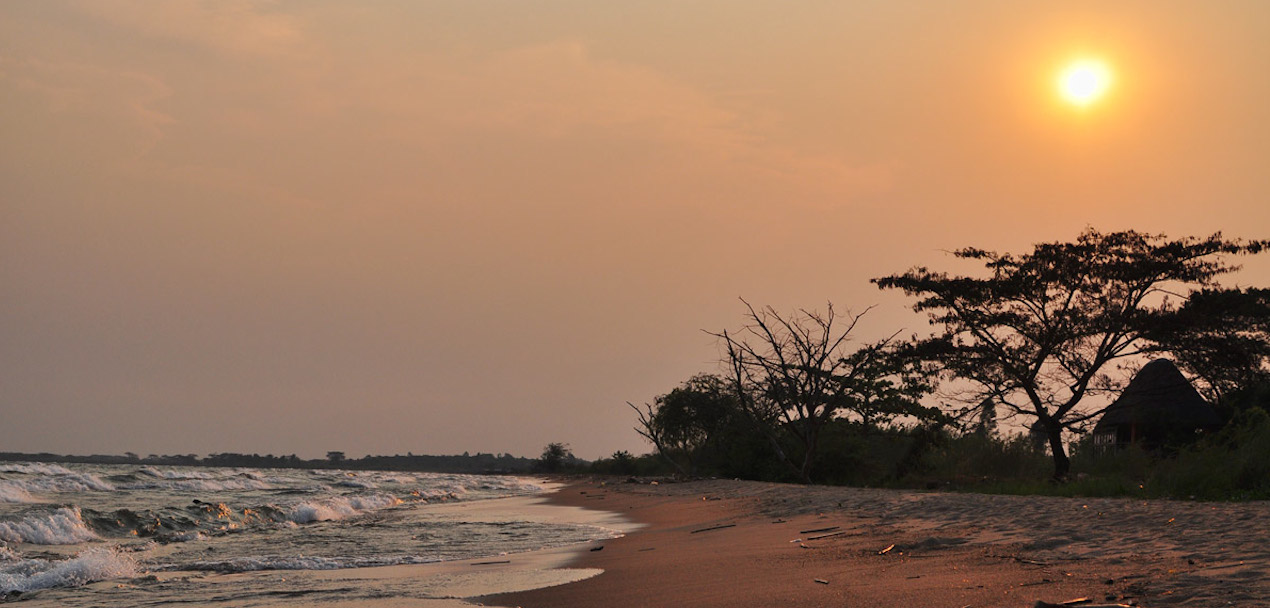
Sunset along Lake Tanganyika, Bujumbura-Burundi. Photo courtesy: Sean Jones, Travel Brochures.
Every single country has got its own culture or traditional practices that are not common to countrymen from thousands of miles away. Burundi is not an exception to this rule. It has a beautifully rich culture related to musical instruments, that for years, has been entertaining people of all generations. Unlike others, Burundian drums are not just mere musical instruments, with their melodic and lyrical sound beats, they are sacred for their place in ancient Burundi and the myths around them have been respected for centuries.
Commonly known as the Royal Drum for its historic importance in ancient Burundi under royal administration, for years, the Burundi drum has been considered as a unique musical instrument that embodies not just the ear-friendly melodies, but also a cultural heritage and an embodiment of beliefs and traditional practices that are respected all over the country. The special treatment of the Burundi drum is a conviction shared among nationals. Young and old, females and males, all Burundian or people who visited the country admire the magic rhythms and stunning dances birthed by beats on wooden barrels, 90 centimeters in height & covered with cowhides. The drum performance is, with no doubt, a strikingly spectacular and attractive game.
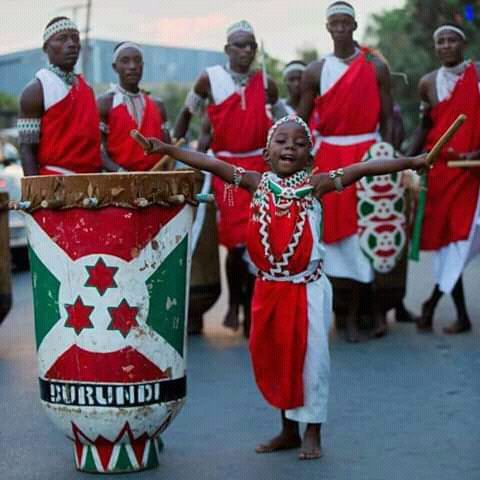
A kid being trained by mature drummers. Source: Espoir Iradukunda, Burundi Times
Royal Percussion
During different kingdoms that reigned Burundi, drums were valued to the extent that they could only be heard on a very narrow number of special events involving the king himself or his special envoys. For instance, towards the end of each year, Burundians could attend sowing rituals where the king could come and bless all sorts of seeds brought by nationals from around the kingdom. The term Ingoma, in Kirundi - the only language spoken in Burundi - is translated into implicitly “Power”, and more explicitly “Kingdom”. Hence, this is what we call the two drums placed at the sides of the entrance at the royal palace. It is therefore clear that drums were not meant to be the private property of a common citizen.
Modern Day Beats
It is not far from normalcy that hundreds of cultural items have lost their value, or have been reshaped to adapt to the modern ages or tailor to millennial’s musical preferences. The Drum did not just survive such a threat; it also got recognition from overseas. In 2014, UNESCO inscribed the Burundian drum to the Intangible Cultural Heritage of Humanity. Burundian drummers have been invited to grace events, locally and internationally. Local and foreign dignitaries from abroad are hosted with drumbeats honors at Ndadaye International Airport, the only internationally operating airport in Burundi. Note that some of the country's guests even attend more drum-hit events during their stay in the country as an unofficial priority.
Gishora
Located in the current political capital city Gitega, Gishora is considered the epicenter and historical sanctuary of royal drums in Burundi. Established at the start of the 20th Century, this part of the country hosts this special artistic skill. Clothed in green, red, and white that makes up Burundi's national flag, drummers perform in a semicircle with a big central drum in the middle mainly beaten by the leader of the crew before he invites the rest of the team to harmoniously pass on it while they all keep track of melodies, poetry and culturally significant lyrics related to the event at hand. As they play beating the sticks on the drums, they wiggle, leap and act comical and meaningful scenes, all to entertain the audience.
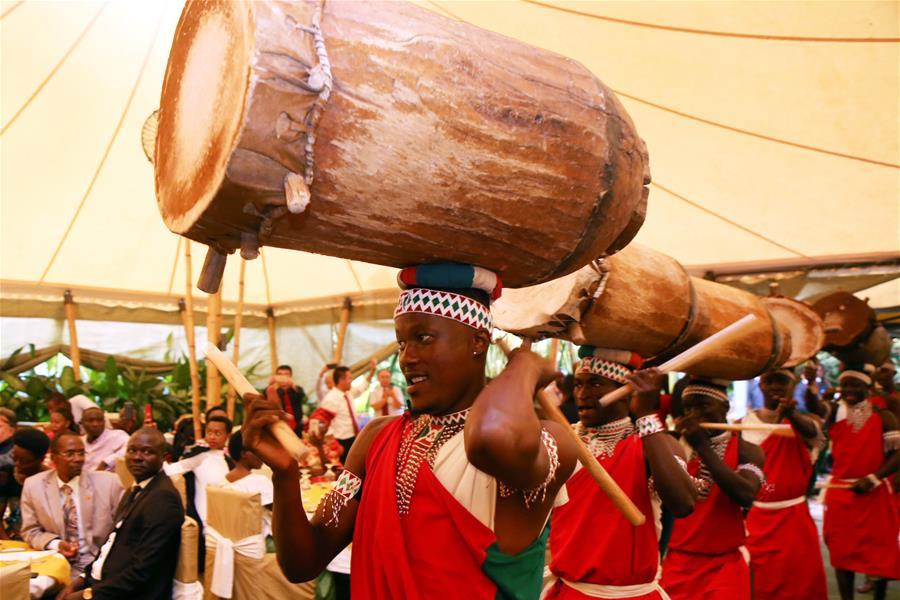
Burundian drummers perform in Bujumbura, the then capital city of Burundi, on December 22, 2018. Source: Xinhua/Lyu Tianran
A drum in Burundi, a symbol of national pride, a sacred instrument to date.
While hearing of the special treatment of the royal drum may have seemed appropriate hundreds of years ago, there are still Do’s and Don’t-s when it comes to making and owning drums, or even when drums are being played. As of now, no one can make his own drum to keep at home and play it at his/her own convenience. Why is it so strict? The answer is simple, drums have a national and traditional significance that no one should interpret as they please. Drums are kept at places known by local administrators and owned by groups that keep them secured and monitored. There is a Kirundi proverb that emphasizes how this claim is still respected and used as it was in centuries ago; it translates to “stealing a drum is worth less than finding a place to play it”. According to an October 20, 2017, presidential decree, if a private event organizer is interested in hosting a drumming club, he must pay a $280 fee to get an official permission before dealing with the drummers’ wages.
One thing that’s hard to understand for outsiders is that women can only accompany drummers performing female folk dances, but are no longer allowed to beat drums. After days of discussions with traditionalists and people working closely with Burundian culture, the same presidential decree banned women from beating drums in 2017. According to traditionalists and professional drummers, it does not make sense when a woman beats a drum. “A drum is an ultimate symbol of a woman’s body and the parts of this instrument just say it all. A womb, breasts, umbilical cord, and a tongue are parts of a real drum and these are found on women’s bodies”, says Samson Ndikumana, a professional drummer from Rumuri Club, a National University-owned drumming club.
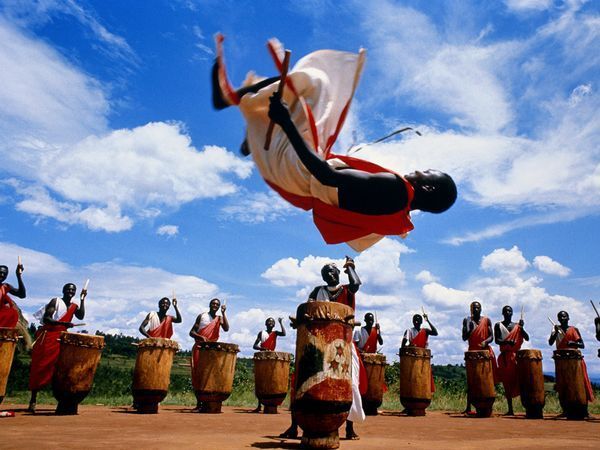
Source: Pinterest
In an exclusive interview with Andariya, Samson Ndikumana said that drumming is one of the best cultural practices. It is more than what people can see with their eyes, it helps drummers get connections and cement social bonds in a country that has had a dark history of hatred and divisions among its daughters and sons. Oftentimes, drummers in the same clubs are neither from the same region nor from the same political or social groups. For Mr. Ndikumana, a graduate from the University of Burundi who has been in drumming since 2015, drumming is also another form of sports. “As we dance, move, and shake our bodies following the rhythm of the beat, so we work out. I don’t know of a better physical exercise that puts the whole body in a brain-coordinated activity” he told Andariya.
Burundi’s drums have put the country within a high level of recognition in the international cultural arena. While drums have been a sign of power in the ancient kingdoms of Burundi, they now help the colors of the Burundian national flag soar abroad. The national anthem is sung in big stadiums where people from all over the world enjoy the beats and the rhythmic dances.
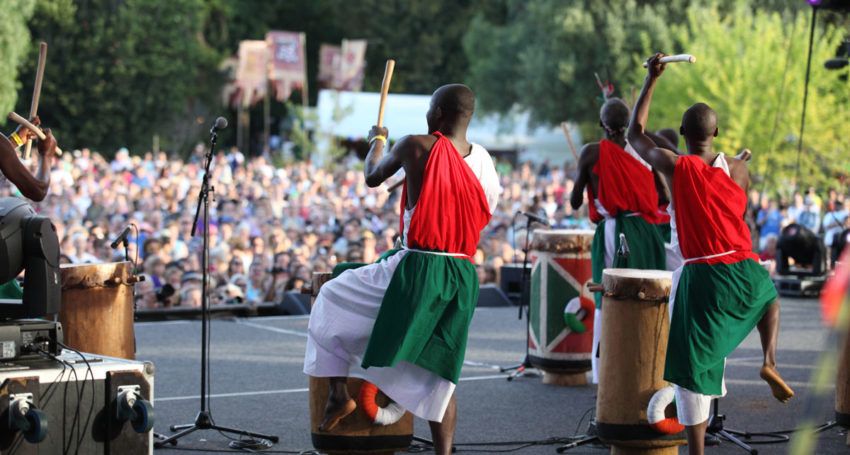
Source: Indaily
Want to see for yourself? You can find this amusing video of Burundian drummers performing at the 20th International Folk Festival in Pieria, Greece in 2017, in Dayton, Ohio, the USA in 2014, in Nantes, France in 2016, and in Ottawa, Canada in 2018.
